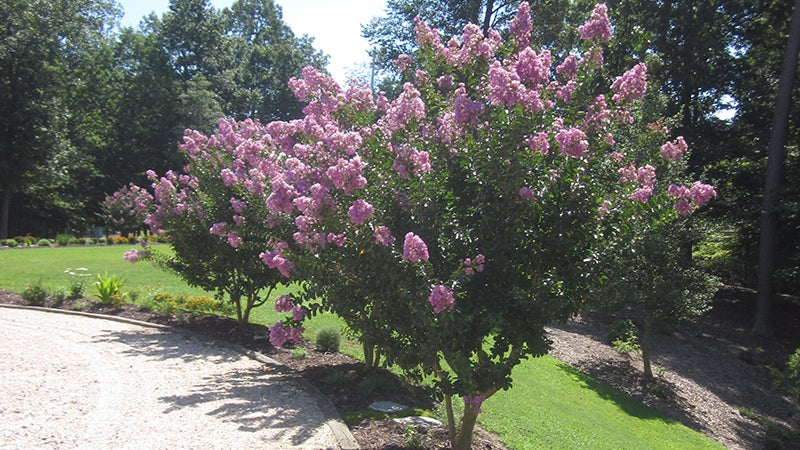Western Tidewater Master Gardener
Published 4:19 pm Tuesday, August 4, 2020
By Kristi Hendricks
Crape myrtle is the “plant of the 100-day bloom.” Don’t we long for more plants to deliver such stellar performance year after year with an equally strong record for low maintenance and resplendent flowers available in a wide array of colors? This plant sets the “lilac of the South” standard in Tidewater, yet it is native to Asia but not invasive.
Every Southern gardener should have at least one to celebrate cultural heritage and to offer sweet nectar to honeybees and hummingbirds. Crape myrtles offer bright spring leaves, dynamite summer flowering, colorful fall foliage and interesting winter bark and seedpods. “Crêpe” in the French language is derived from the Latin word “crispa” meaning curled, a fitting name for the flower’s frothy mid-summer appearance.
Skip the fuss over the spelling of this plant’s name (several variations) and spend your research selecting the perfect cultivar for your landscape. Deploy this plant en masse or as a specimen. Create an island of crape myrtle beauty positioned around a dry, rocky outcrop or turn your driveway into a saber arch canopy with a row repeating the same cultivar and flower color for welcoming impact.
Online Virginia Cooperative Extension publication 430-451 provides a useful listing of crape myrtle cultivar forms from dwarf shrub to large tree, plus their flower and trunk color information. Appropriate site placement with full sun wins the battle for having a shapely-formed plant. Build plenty of space into your design for the plants to fill out and take their natural shape (both height and width).
Which leads to the tricky topic of pruning. Selective pruning is essential. Do so using naturalistic techniques. Catch up with your plant before having the desire to commit unhealthy shearing practices. “Crape murder” or buck horning the plant to an arbitrary height creates the unsightly winter appearance of the tail end of a witch’s broom.
Alternatively, using heading and thinning cuts can lower the height and open the plant for better air circulation (powdery mildew preventive) and flowering. Remove dead branches at any time. Rub off base suckers when they form instead of allowing these quick growing shoots to mature into additional, unsightly trunk stems.
There are several good reasons to avoid pruning in autumn. The seed heads provide a food source for overwintering goldfinches, cardinals and chickadees. Gardeners receive full enjoyment of the colorful fall orange and yellow foliage. And the delay dampens the crape myrtle’s tendency to sprout new stems that easily snap with next season’s heavy blooms.
Wait until late winter to trim. If your myrtle is oversized from years without shaping, consider downsizing in stages instead of in one pruning session. Nevertheless, this plant is very forgiving of overzealous home gardeners.





